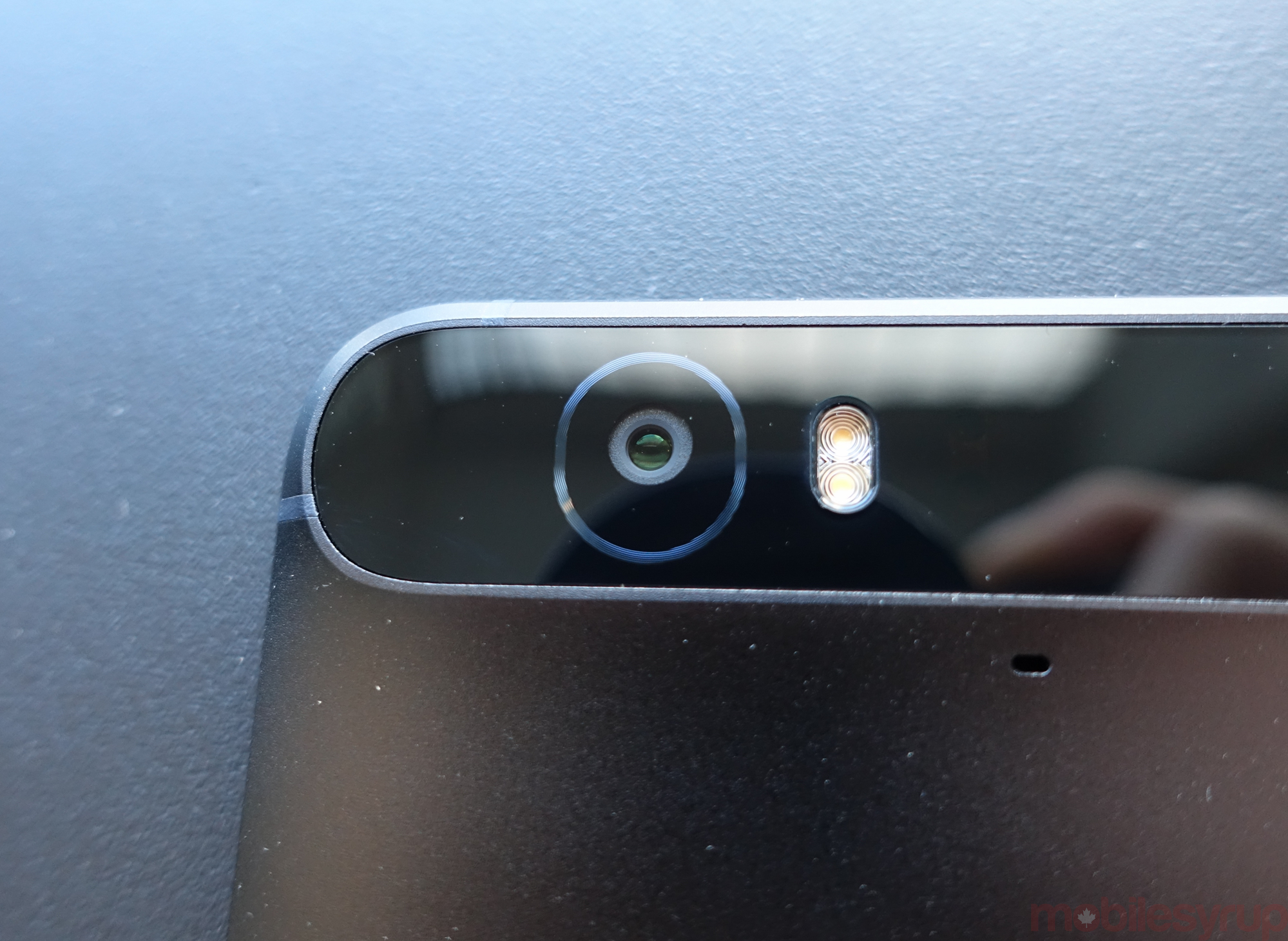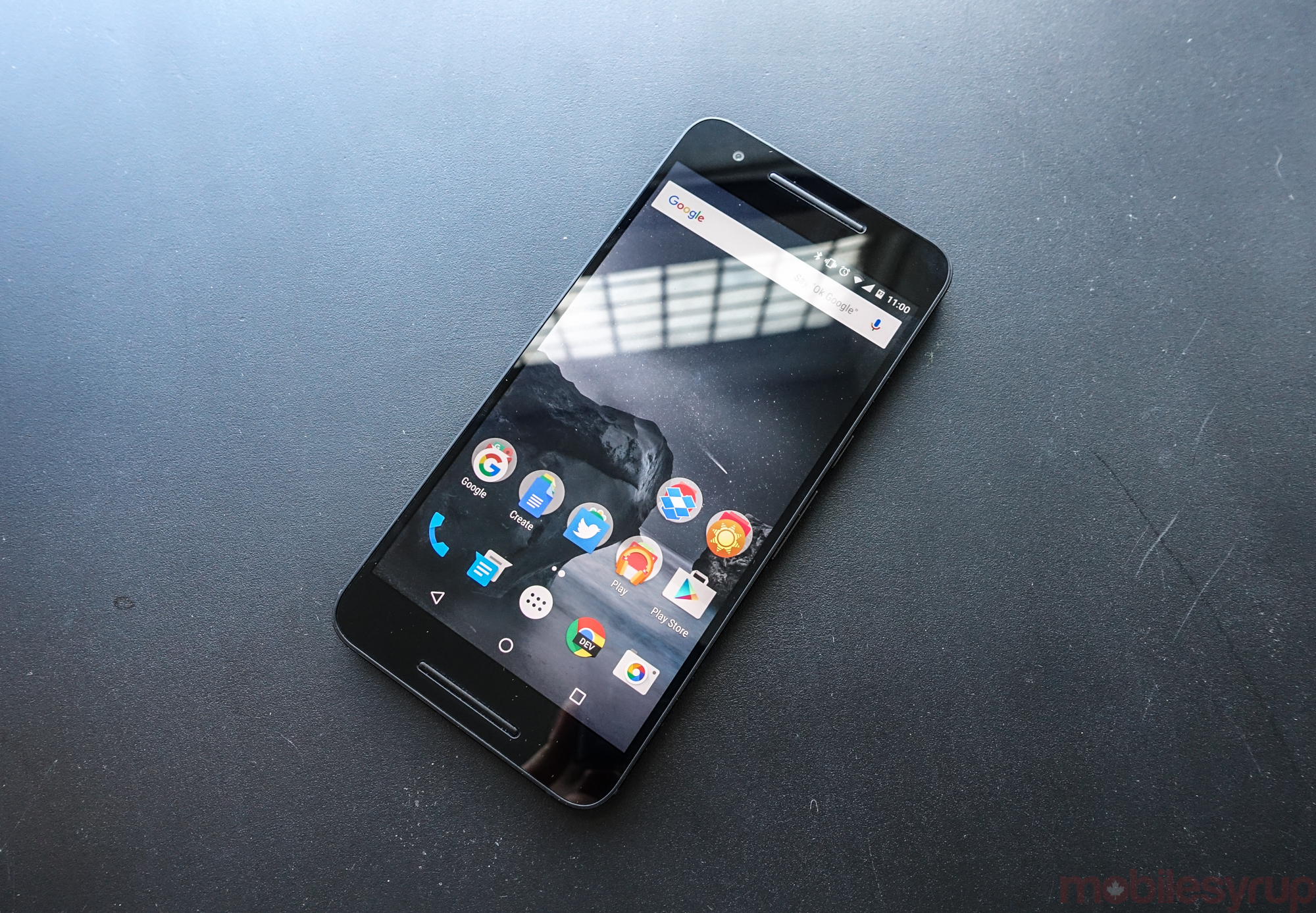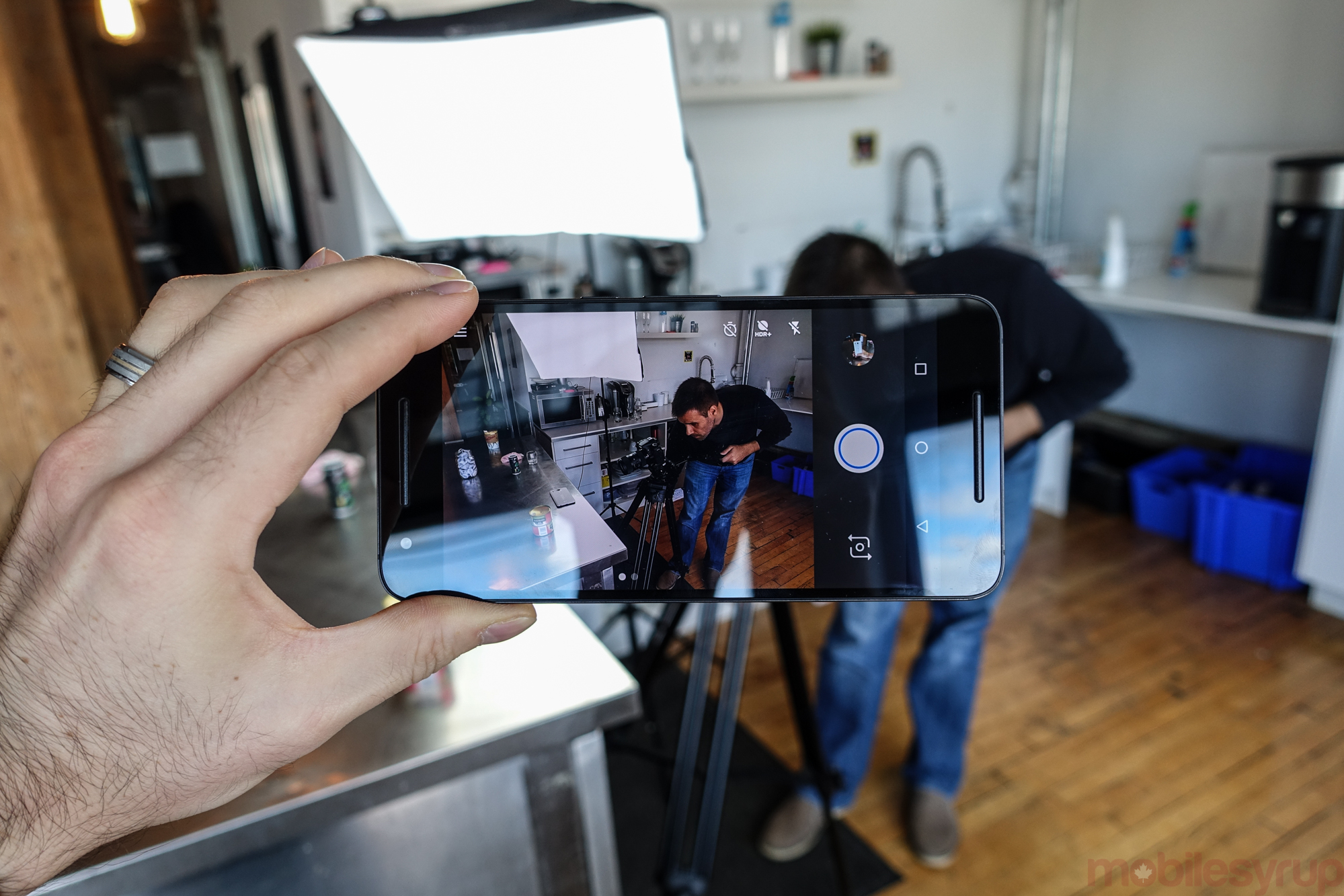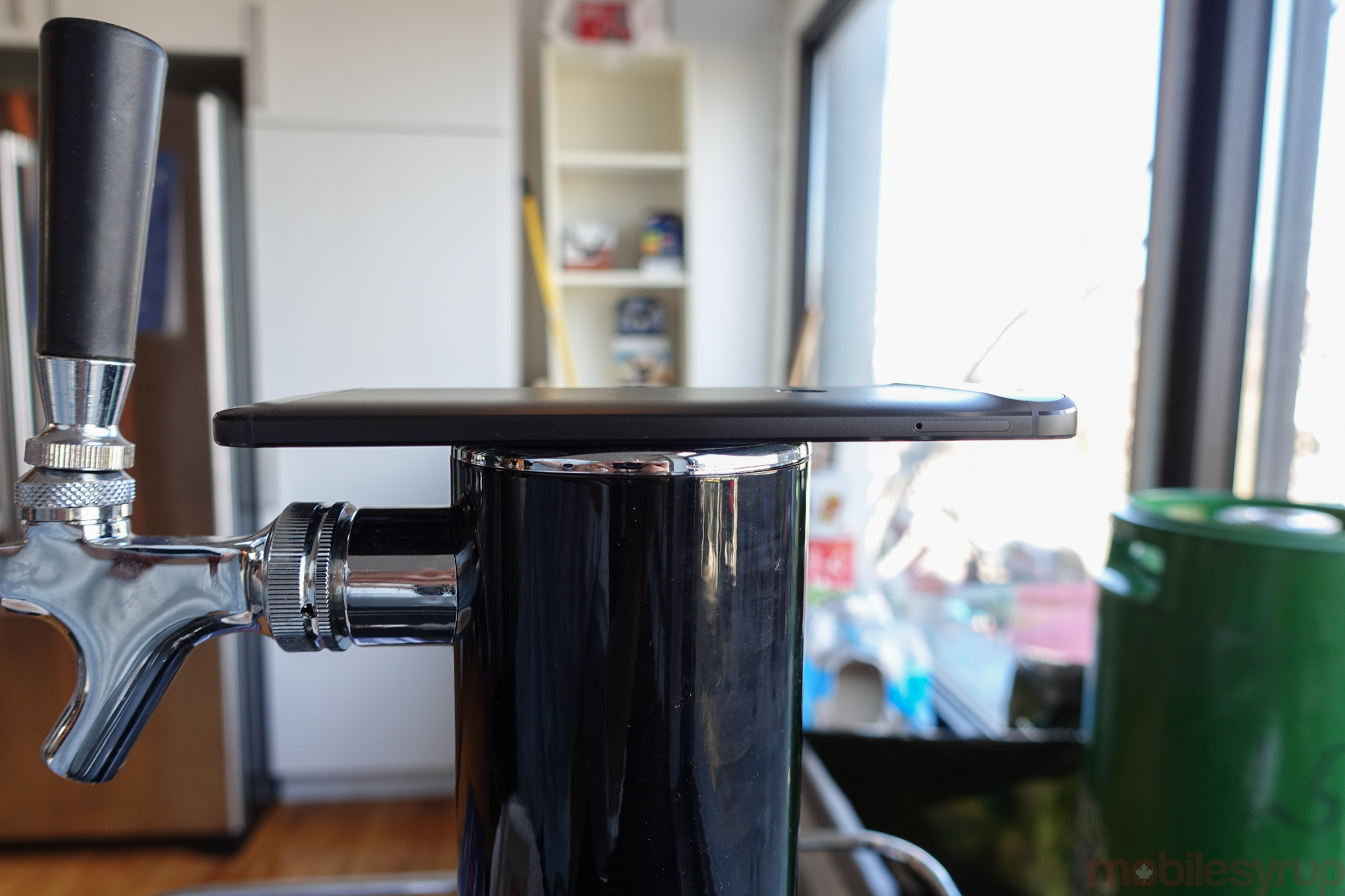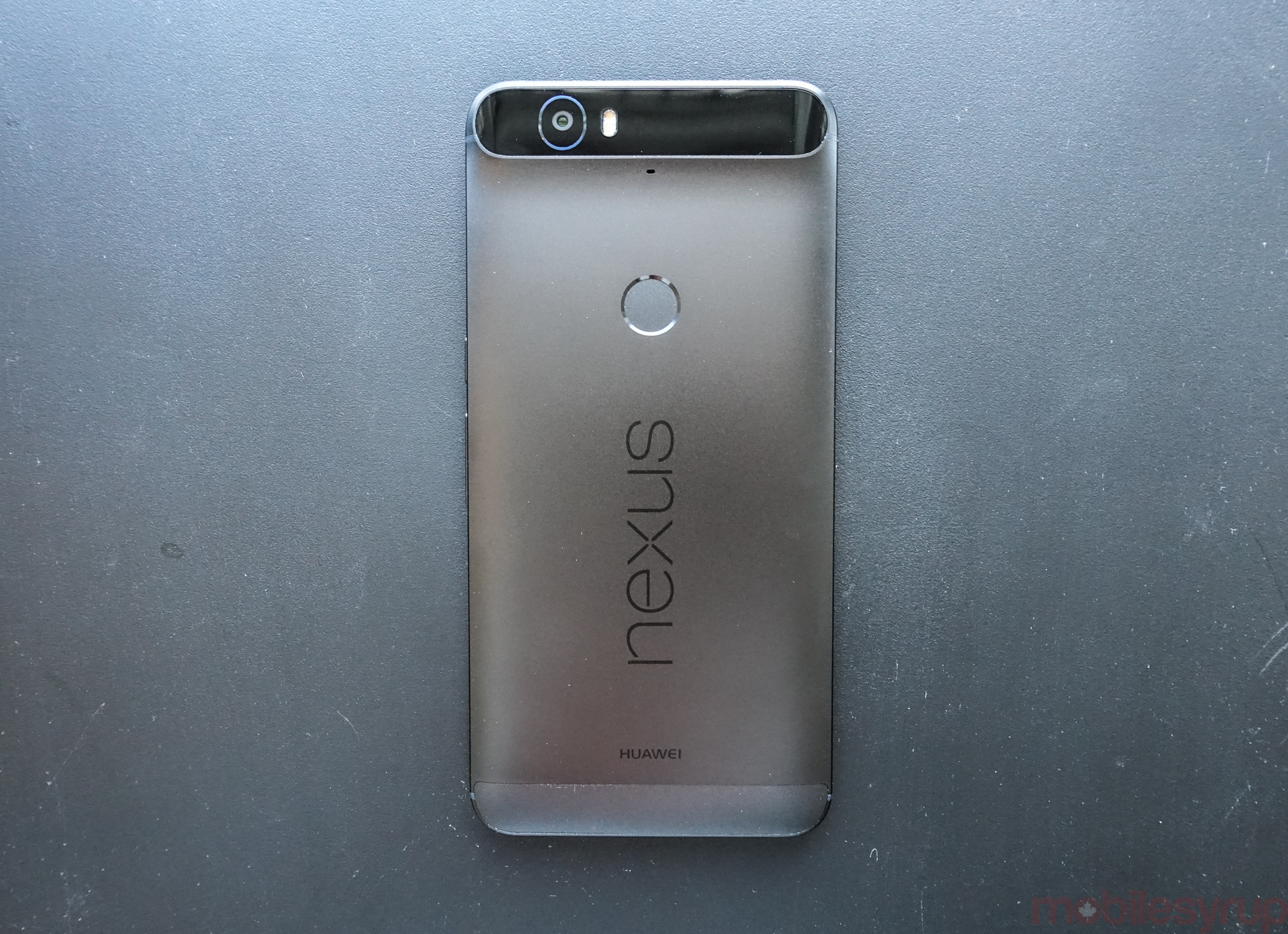
Having used a lot of Android devices, I know the signs. It usually takes a few weeks, but eventually the chugging begins. Apps load more slowly; the keyboard isn’t quite as spritely; games stutter and crash. It’s hard to pinpoint what causes it, but don’t blame yourself.
I’m sure Android OEMs don’t want this for their customers, but there is usually only one solution to the problem: reset. Burn it all. Start fresh.
There is another way, though: Nexus phones, by design, avoid such long-term degradation by avoiding the often-debilitating background processes and bloated pre-installed apps carriers and manufacturers insist on bundling.
This year, Google has teamed up with an unlikely partner, Huawei, for its top of the line smartphone, the Nexus 6P, and that steadfast move towards long-term performance seems to be even more firmly in the company’s grasp. The Nexus 6P is the best Android phone currently available for most people, and an example of what happens when Google maintains control over both hardware and software.
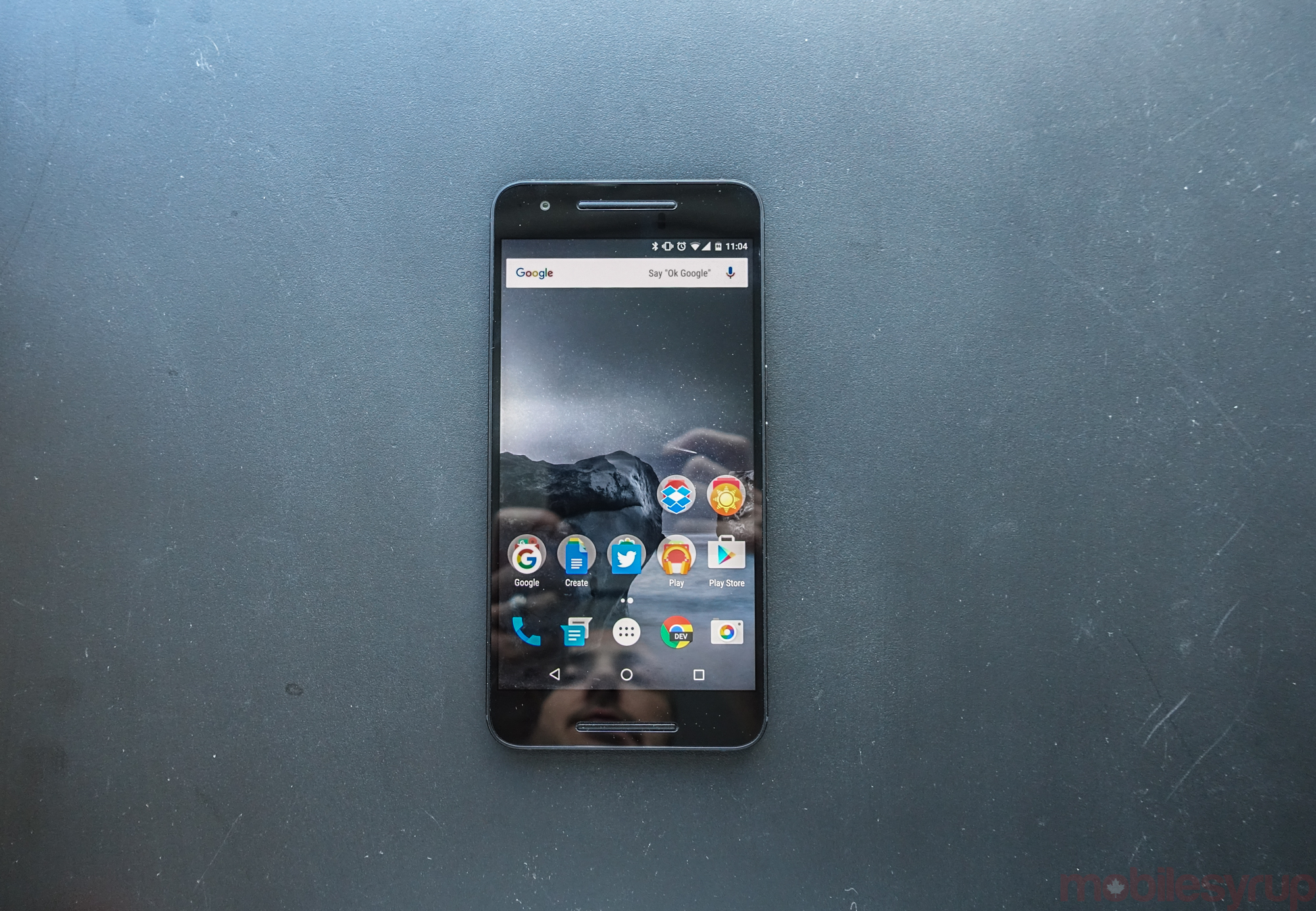
Specs
- Android 6.0 Marshmallow
- 5.7 inches QHD (1440×2560) AMOLED, 518 ppi
- Qualcomm Snapdragon 810 SoC w/ Adreno 430 GPU, Gorilla Glass 4
- 3GB DDR4 RAM
- 32GB/64GB/128GB storage options
- 3450 mAh battery with Fast Charge
- 12.3MP rear camera, 1.55um pixels, f2.0 lens, laser-assisted autofocus
- 4K video capture @ 30fps
- 8MP front-facing camera
- Wi-Fi a/b/g/n/ac, Bluetooth 4.2
- 159.3 x 77.8 x 7.3mm
- 178 grams
- Nexus Imprint Fingerprint sensor,
- Sensor Hub, Accelerometer, Gyroscope, Barometer, Proximity sensor, Ambient light sensor, Hall sensor, Android Context Hub
- LTE (FDD): B2/3/4/5/7/12/13/17/25/26/29/30
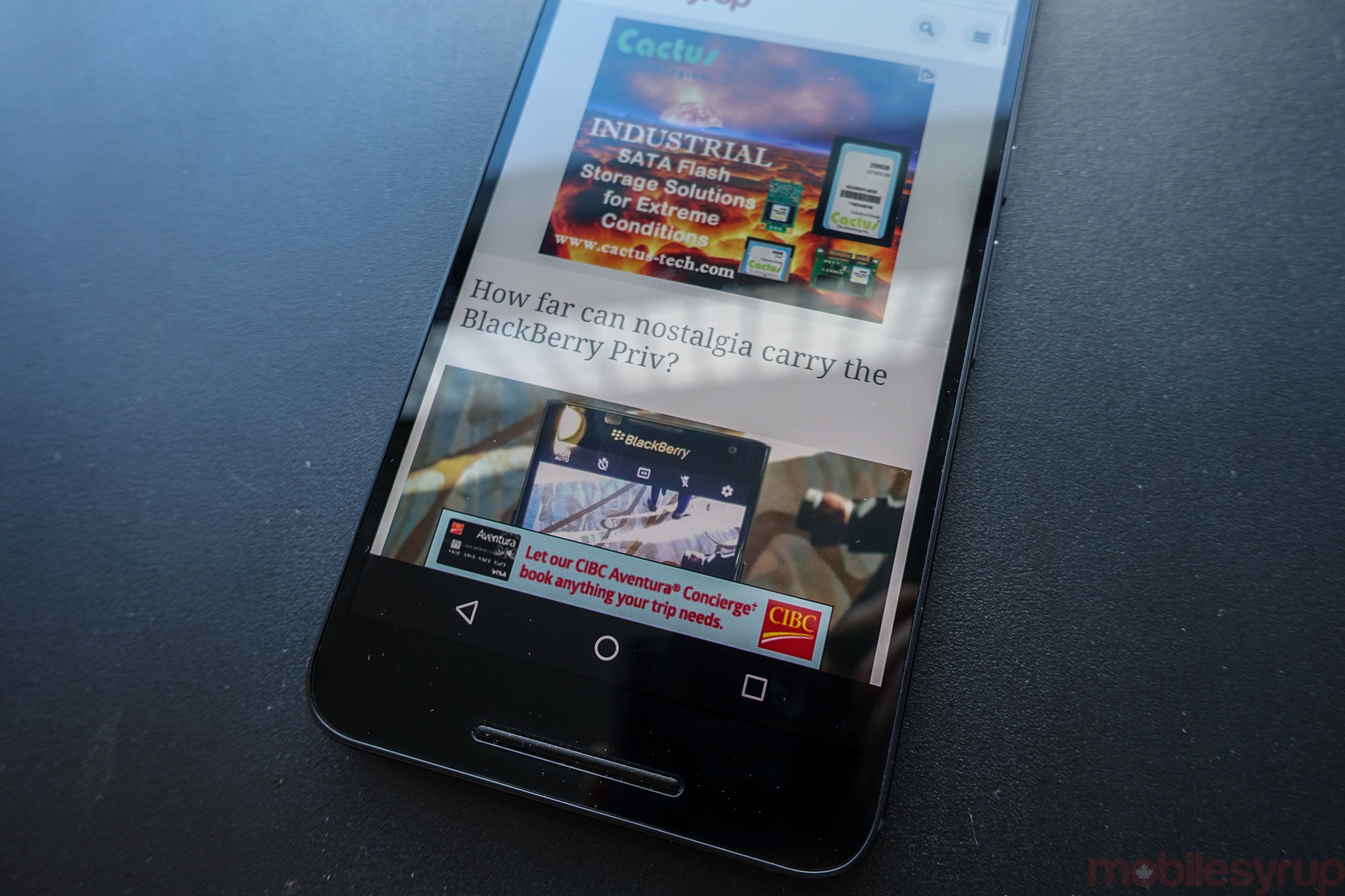
Device & Display
Tall phones like the Nexus 6P need to be thin and narrow to offset the added height that comes from having a larger display. While there are technical limitations to minimizing bezels around a display, Huawei has done a meaningful job keeping narrow the vertical bezels around the 5.7-inch AMOLED panel. The same can’t be said, unfortunately, of the space above it, making Nexus 6P notably taller than the Note 5, despite identical screen sizes. Thankfully, there is a reason for the added height: front-facing stereo speakers that have ample amplification to enjoy a song without cringing from thinness, and enough volume to appreciate a podcast without sibilance. They’re not the best stereo speakers I’ve heard, but they’re pretty close.
And while the phone doesn’t manage to pass the one hand test with muster, its narrow and thin frame courts the more careful of users. It only took me a few short days to grow used to the phone’s size, and I rarely felt it an encumbrance to hold the Nexus 6P in my hand or slide into my pocket the way I did the Nexus 6.

That it is significantly more angular and robust than its predecessor also helps in this regard. The metal sides, flush and chamfered, are pleasant to grip, and the back, which holds most of the personality in the phone, is comprised of one of three metallic finishes: aluminum, graphite black, and frost white.

All of them are made of the same substance, as far as I can tell, and the difference in the finished product is subtle at best. I was able to play with both the aluminum and graphite versions and came away with a more favourable impression of the former, though it really comes down to taste.
I really like that Huawei offered such thoughtful choice here, since all of the finishes are beautiful and tasteful in their own ways.
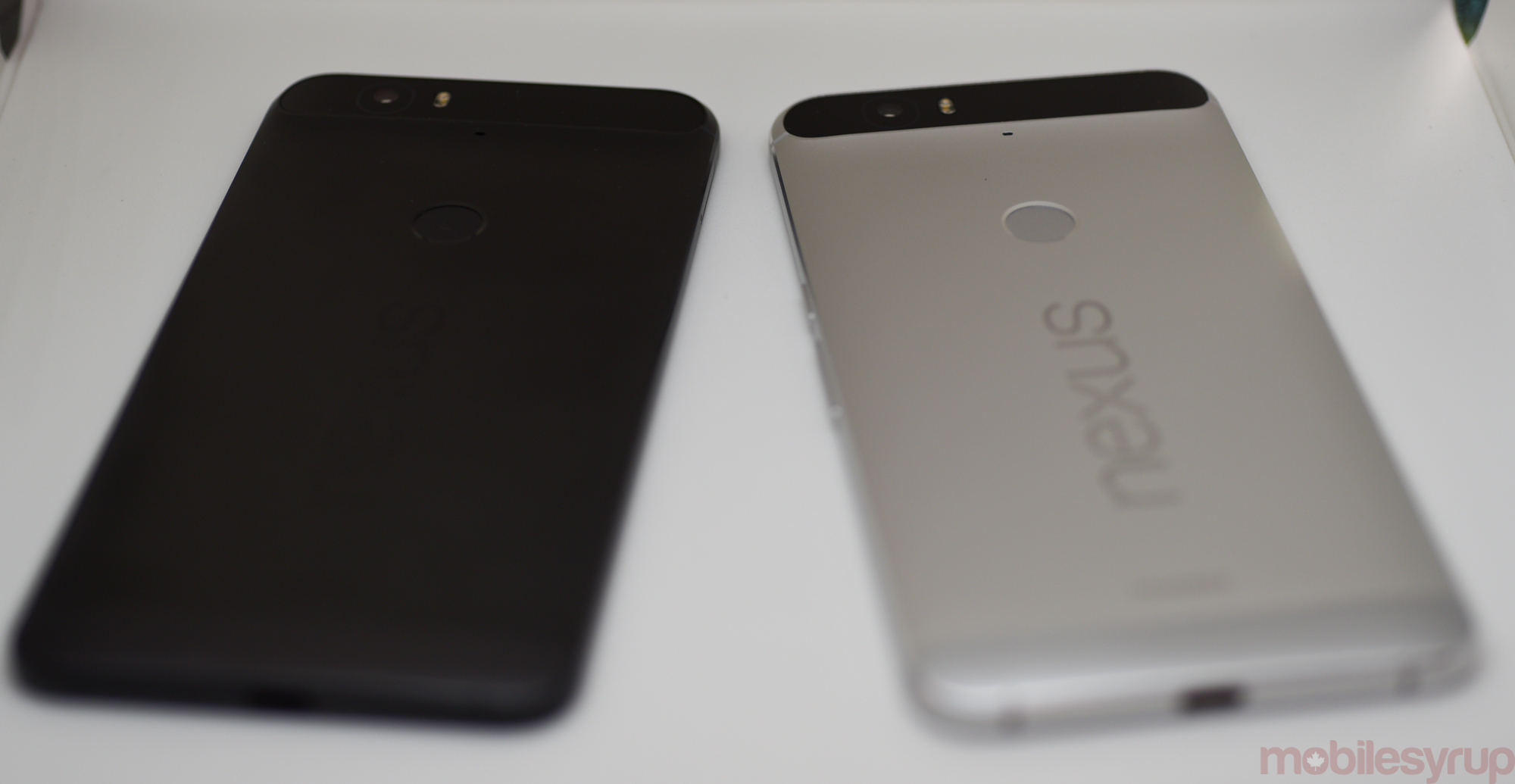
On the bottom the phone rests the USB Type-C port, which is making its way into an increasing number of devices as we approach the end of the year. Here is it used to the fullest potential yet realized in a smartphone, since not only does its reversible nature ease the frustration of correctly orienting the cable, but its Fast Charging compatibility obviates the need for wireless charging, which the metal housing couldn’t countenance.
Battery life was great on the Nexus 6P, but being able to charge it from dead to full in around 90 minutes with its compatible multi-voltage charger was itself a benefit.
Around back, the 12.3MP camera rests on the left side of a black strip that houses a number of other sensors and antennas, a compromise necessary when you’re dealing with an all-metal smartphone, since metal attenuates RF signal. The strip itself isn’t nearly as unsightly as pictures make it out to be, nor as ungainly as leaked renders conveyed. In fact, it’s a pleasant contrast to the metallic body, though it blends best with the graphite variant. I’ve have done without it, since it detracts from the design, but it’s no eyesore.
Below it, the Nexus Imprint fingerprint sensor rests near flush with the chassis, a circular outline tracing the extremes of a digit’s size. In daily use, the rear-facing fingerprint sensor, irrespective of speed, is not an advantage over the front-facing sensors of the Galaxy and iPhone line, but there is one major benefit.
Removing the phone from a pocket requires grasping it firmly in one hand, and the index finger tends to naturally rest near the sensor’s position. With enough practice, that action becomes second nature and I found the phone unlocked — the sensor can be activated with the screen turned off — when lifted to eye level.
But that single advantage is outweighed by the fact that one must still rely on a regular PIN or pattern when the phone is resting face up on a surface. It’s not difficult to pick up, unlock and put back down, but after using the HTC One A9, which combines the screen-off-unlock prowess of the Nexus with the front placement of the iPhone, I’m not convinced Huawei’s placement is ideal.
Of course, HTC made the decision to forgo stereo speakers for that exact reason, so the Nexus 6P reaches a compromise around usability, design and features, which I can appreciate.
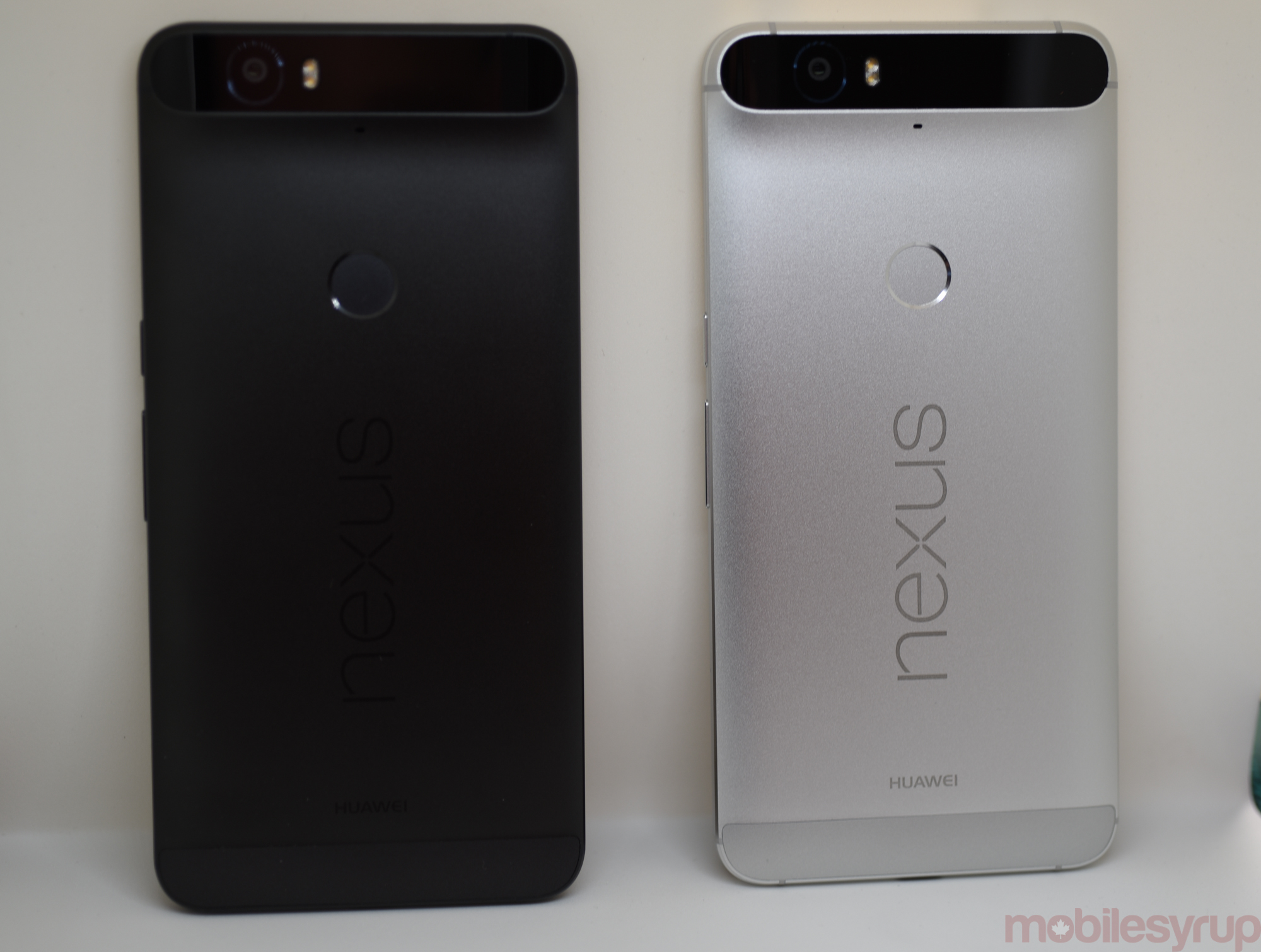
There is one significant advantage to the phone’s size: its 5.7-inch 2560×1440 pixel AMOLED display is simply beautiful to look at, under artificial light, in the sun, or from an angle. While it’s unclear whether Huawei is using the same panel as the Note 5, it’s likely pretty close: this is easily in the top three smartphone displays I’ve seen, its only weakness being subjective in that its white balance is slightly colder and yellower than the LCD panels I enjoy on other devices.
The Nexus 6P’s panel gets bright, too, though significantly less so than the Note 5, whose transistors appear to prove more power to the organic diodes that generate the light and colour from each pixel. It’s not a problem in regular use, and Huawei appears to have calibrated the colours as well as one could expect for an AMOLED panel.
Performance & Software
The Nexus 6P runs hardware that as of late 2015 could be considered fairly rudimentary — even behind — for its size, price and marketing position. Indeed, its 2560×1440 pixel display requires a high-end Snapdragon chip, and the Snapdragon 810, despite its problems, is the best off-the-shelf system on a chip currently available. A lot of people expected the Nexus 6P to ship with the previously-announced but unreleased Snapdragon 820, but we discovered this summer that the part was not set to be released until early next year.
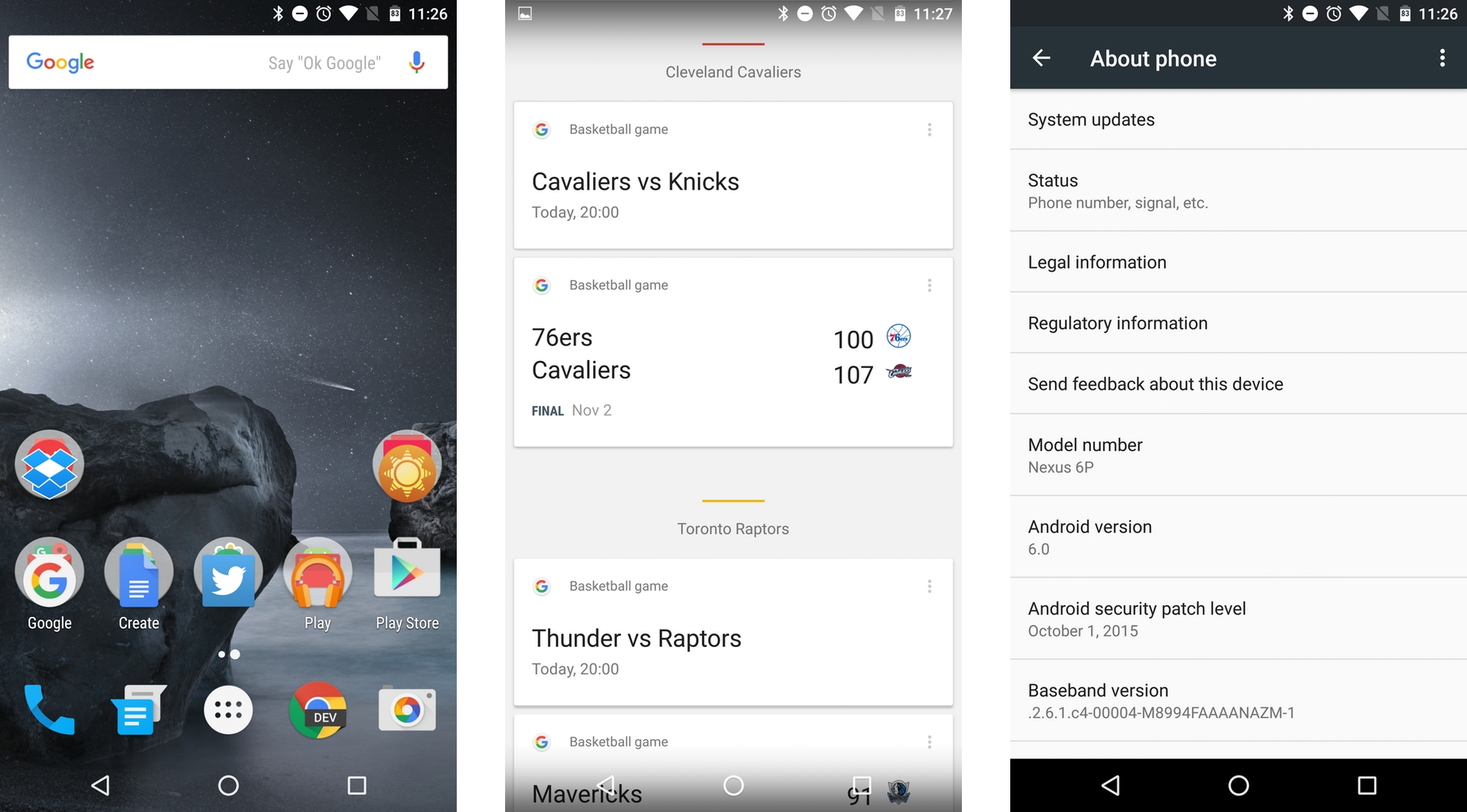
The Snapdragon 810 is a fine chip, with excellent credentials and few actual problems in daily use. Yes, it throttles more than it should, but the metal chassis of the Nexus 6P helps dissipate some of that heat. Moreover, it appears that Google has optimized Android 6.0 both for power consumption and performance, since the Nexus 6P feels significantly lighter and lither than any other device, including the HTC One M9, with the Snapdragon 810 on board. Huawei’s inclusion of 3GB of RAM appears ample, with fewer app refreshes than what I saw on the Samsung Galaxy Note 5 despite a gigabyte less of memory.
All told, Huawei has created an ideal vehicle to showcase Google’s latest software. It is fast, mostly stable, and the most tightly integrated example of Android hardware and software working together. You can see that in the fingerprint sensor, which only takes a few presses to acquire one’s details, promising to improve over time. I experienced fewer rejections with it over my testing period than with the HTC One A9, and it took less time to learn than the iPhone 6s.
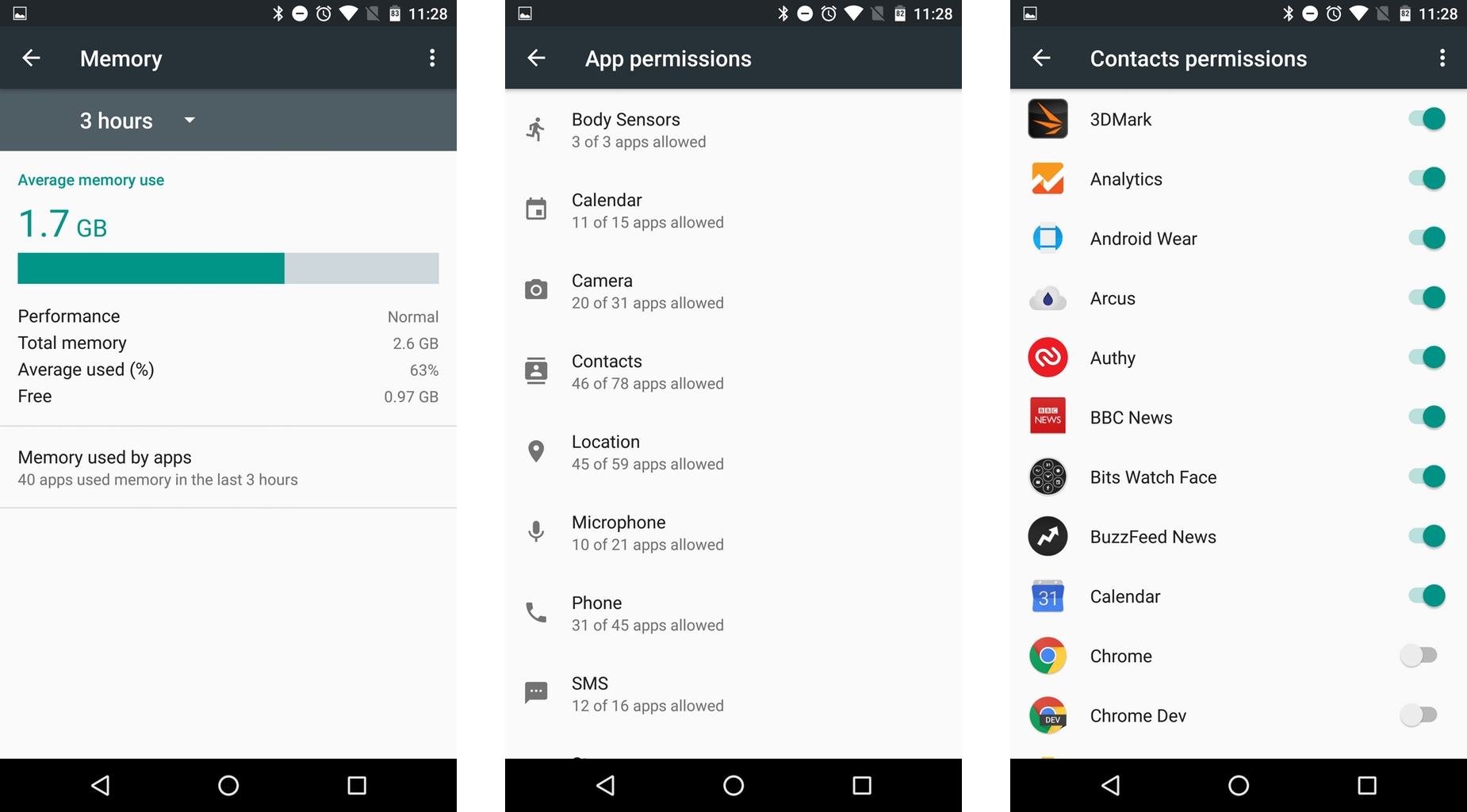
Android 6.0 is a great operating system, and is considerably more stable than the first version of Lollipop this time last year. But it still has its fair share of issues, including a marquee feature, Now on Tap, that doesn’t quite justify the fanfare it attempts to command. Custom app permissions, improved microSD support, more granular memory and app management, and considerably better battery performance are the most significant of myriad upgrades made to the core of Android.
But the single biggest reason for buying a Nexus product, and the reason I will continue to recommend either the Nexus 6P (or 5X, depending on your budget) is that it is updated directly from the source. I can’t speak for American carriers, but Canadian telcos have a hit-and-miss history of Android updates, and, left to their control, the likelihood of receiving updates peters out after 12 months, and falls to near zero after two years. The manufacturers, too, give up on their products far too quickly, leaving even their most treasured crop a vast wasteland of aging interfaces and gaping security holes.
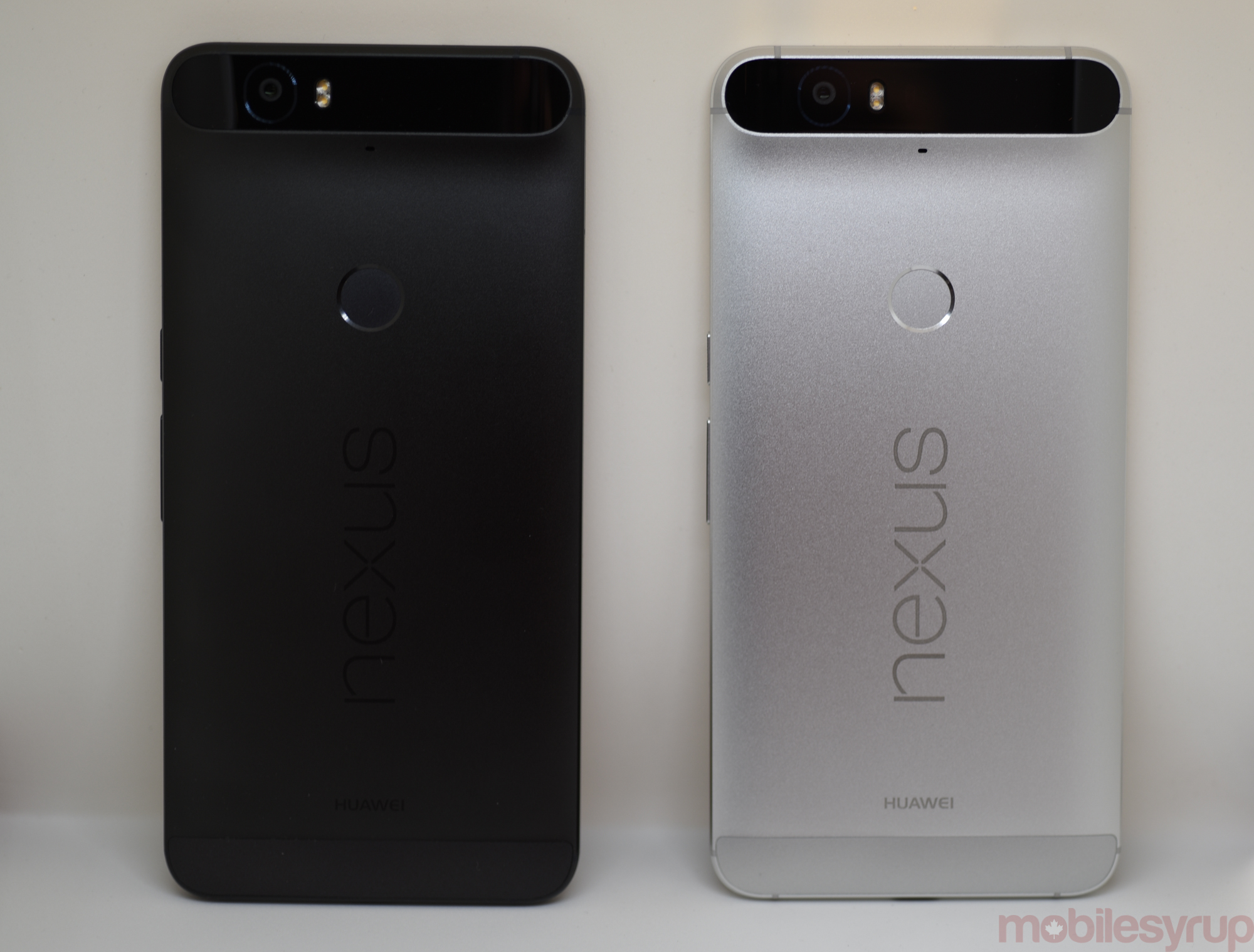
As hyperbolic as that sounds, and as unlikely as one is to be infected with the myriad vulnerabilities Android has overcome over the years, buying a Nexus phone is the single best way to stay updated on both features and security. And prior to the Nexus 6P, the top of the line Nexus devices were rife with compromises; new versions, sure, but terrible cameras, mediocre battery life, and uninspired design.
This year, none of that is true.
Camera
Google and its Nexus hardware partners have for years talked about the annual improvements made to camera sensors and software, and each year we were taken for fools. Yes, the previous Nexus phones had cameras, but the nicest compliment I could give them was that they didn’t extrude like eyesores.
You’d therefore be forgiven for approaching the claim that, yes, this year’s Nexus phones had great cameras, with a dose of healthy skepticism.
Well, knock me off a chair, there was truth in the lie: The Nexus 6P has a remarkably good camera sensor and lens combo, though it is practically ruined — not entirely, but close to — by a camera app that appears to have been developed by a million monkeys typing random batches of code that somehow congealed into software. Yes, it’s that bad.
But when you finally get the app to stop crashing, or infuriatingly refreshing when tilting the phone at even the slightest of angles, the Nexus 6P takes some damn good photos.
This is thanks to a 12.3 megapixel Sony sensor that boasts 1.55 micron pixels, larger than practically every smartphone on the market today. In contrast, the Galaxy S6’s superlative 16MP camera sensor boasts 1.2 micron pixels, and the iPhone 6’s 8MP shooter sits at 1.55 microns each.
There are a lot of factors to consider here, but the basic scenario is this: the more pixels you pack into a sensor, the larger the sensor physically becomes, or conversely, the smaller the pixels themselves. The decreasing girth of high-end smartphones often necessitates the latter solution, compromising low-light performance as a result. With Samsung, LG and Sony putting 16 to 23 megapixel sensors on their high-end devices, it’s left to Google, Apple and a few others to come to some sort of reasonable solution. Twelve megapixels finds the right balance between spatial resolution — how much detail you get capture in a photo — and sensor size.
Even though the Nexus 6’s 13MP sensor was considerably better than the Nexus 5 that preceded it, the 6P (and 5X, which shares the same architecture and lens) is a world away. Chalk it up to Android’s rapid ascent to optical stardom over the past twelve months, but I had no doubt, time after time, that the Nexus 6P would capture a great shot in most conditions.
Double-pressing the power button quickly launches the camera app, similar to the shortcut popularized by the Galaxy S6 earlier this year. Depending on its changeable mood, the camera app either loads instantly, or takes its sweet time — upwards of eight seconds, I counted during one session — but once in the app, and absent of a wayward hand tilt, the shutter is fast and fluid.
The laser-guided autofocus is decent enough in well-lit areas, but often fails to correctly gauge the distance of a subject when the sun goes down, forcing the lens to hunt and peck before it reaches its correct focal alignment. Once focused, though, the Nexus 6P takes incredible photos in practically any lighting condition, capturing details that the competition often can’t.
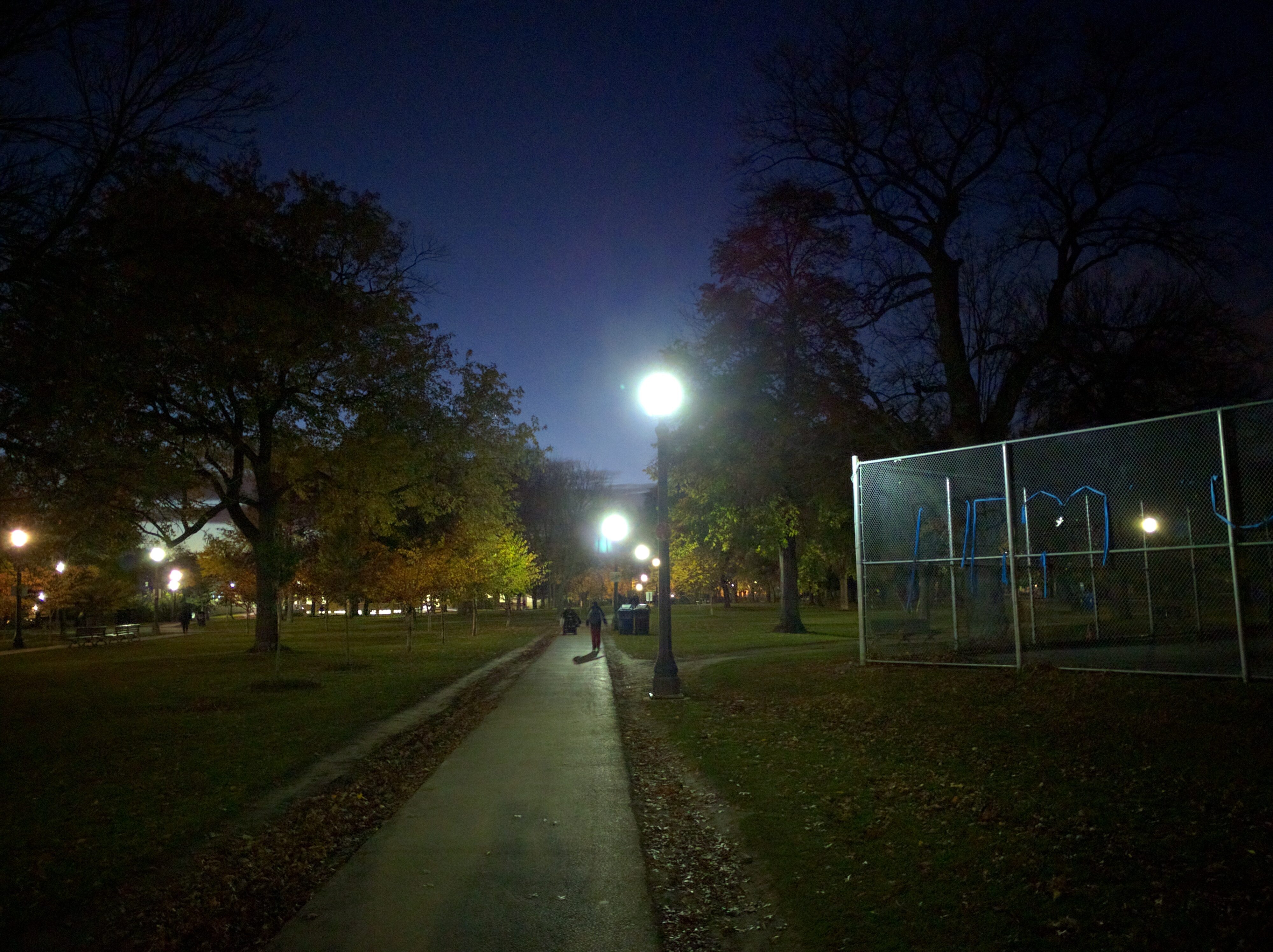
Check out the amount of detail captured in this nighttime shot. Lots of grain, since the ISO was ramped to 2077, but plenty of great colour and contrast. Great shot.
The phone still defaults to Auto HDR+, Google’s take on High Dynamic Range photography. And while the Nexus 6P does a great job in challenging and variable contrast, the HDR photos themselves take too long to capture, and far too long to process. Still, with a relatively static scene, HDR+ mode is a miracle worker, especially in low-light outdoor shots.

An example of an HDR+ photo shot on the Nexus 6P. Look at the gorgeous contrast between light and dark scenes.
This year’s Nexus also handles macro shots gracefully, thanks to an F2.0 lens that has a forgiving minimum focus distance. In no scenario did the Nexus jump out as being the single best camera above, say, the iPhone 6s Plus or Galaxy Note 5, but it performed admirably in every scenario I through at it, ramping up ISO when necessary or cycling shutter speed to capture a moving car without blur.
That it lacks optical image stabilization is disappointing, but Google says that its software-based electronic stabilization makes up for it. I disagree, but it’s not an out-and-out loss.
The Nexus 6P also captures 4K video at 30fps, which turned out much better than I thought it would given the Snapdragon 810 ISP’s relatively lukewarm reception on other devices. Tracking was smooth and quality high, though I preferred to capture video at 1080p at 30fps, which also allows for the same electronic stabilization I mentioned above.
And if you’re into selfies, the 8MP shooter on the front of the device is decent but nothing special.
Google finally got its camera right, but it came in the same year every OEM got their cameras right. The thing about Nexus devices, though, is that they only get better with software updates, so hopefully Google fixes the dastardly quality of its homegrown camera app. Until then, Manual Camera is but a $3 purchase away.
Battery Life & Connectivity
With a 3,450mAh battery, it’s no surprise the Nexus 6P lasts a long time. But with a USB Type-C connector, Fast Charging support, and a host of battery improvements thanks to Android 6.0, the Nexus 6P is the first Nexus device I’ve ever used where I didn’t actively worry I would run out of juice by dinner time.
In our battery rundown tests, the Nexus 6P lasted just over 12 hours, which is in line with most high-end Android devices today, though two hours shy of the iPhone 6s Plus, and slightly ahead of the Samsung Galaxy Note 5’s 3000mAh cell.
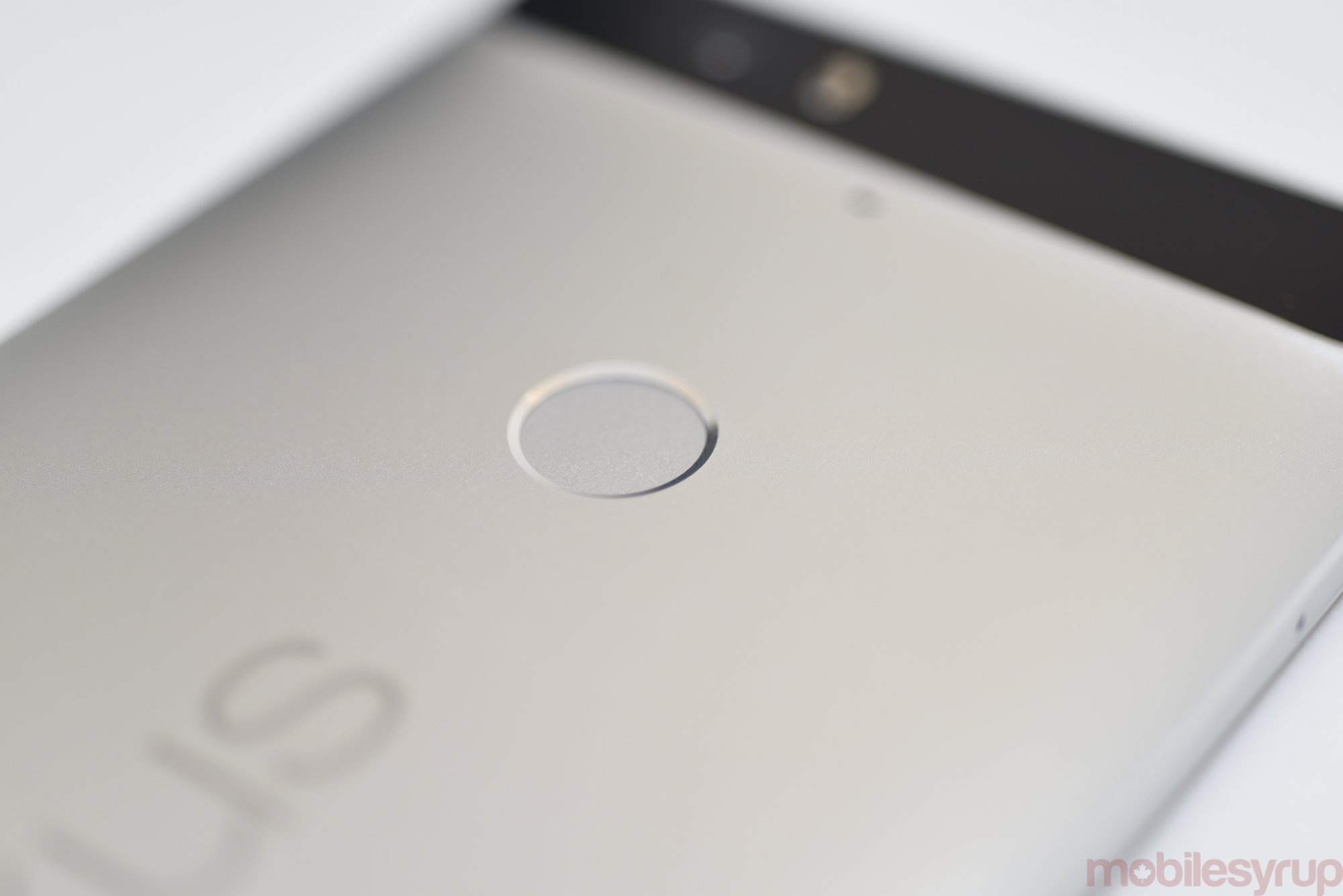
The lack of wireless charging, which its two predecessors offered, is forgiven when you look at what you gain: the new connector is reversible, and so easy to use; Fast Charging gets the phone from dead to 100 percent in about 90 minutes; and the Snapdragon 810 sips power when necessary.
As far as connectivity, this phone has everything you’d expect, from 300Mbps Category-6 LTE support to the latest in WiFi and Bluetooth integration.
Huawei also outfitted the Nexus 6P with a powerful amplifier, which was able to push my relatively low 16 ohm RHA T10i in-ear monitor headphones to their fullest. Sound quality from the headpiece was great for phone calls, too, though my testing was limited in that regard.
Android at its best
The Nexus 6P comes to Canada with a world of Android competitors nipping at its heels. Not only is the $499 Nexus 5X a very attractive prospect, especially for someone who doesn’t want a large device, but products like the OnePlus 2, Samsung Galaxy S6, LG G4, Sony Xperia Z5, and many others, are viable alternatives.
But I’ll say this: putting all specs aside, the Nexus 6P provides the best all-round Android experience to date, and with monthly security updates from Google, there is no question as to its penetrability.
It’s not a perfect Android phone, but it’s the closest example of software that pairs with hardware in a way that feels holistic and seamless. And despite its seemingly-high price, it is one of the best values in the smartphone world right now.
Pros
- Big, beautiful screen
- Consistently good performance
- Latest Android software
- Highest frequency of Android security updates
- Great camera, even in low light
- Excellent battery life
Cons
- Some software instability
- Camera app is terrible
MobileSyrup may earn a commission from purchases made via our links, which helps fund the journalism we provide free on our website. These links do not influence our editorial content. Support us here.

